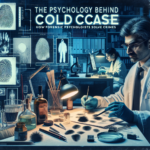Unraveling Mysteries: How Crime Scene Investigators Piece Together Evidence
Crime scene investigation is a crucial aspect of solving criminal cases. It involves collecting, preserving, and analyzing evidence found at the scene of a crime. Crime scene investigators play a vital role in piecing together clues that can lead to the identification and apprehension of the perpetrators. In this article, we will delve into the intricate process of how crime scene investigators unravel mysteries by carefully examining evidence.
Initial Assessment
When crime scene investigators arrive at the scene of a crime, their first task is to conduct an initial assessment of the area. They carefully observe the surroundings and take note of any potential evidence that may be present. This includes collecting physical evidence such as fingerprints, hair samples, fibers, and blood stains. Investigators also take photographs of the scene to document the evidence before it is disturbed or tampered with.
Evidence Collection
After conducting the initial assessment, crime scene investigators move on to the process of evidence collection. This involves carefully collecting and preserving any physical evidence found at the scene. Evidence can come in many forms, including DNA samples, fingerprints, bullet casings, and weapons. Each piece of evidence is carefully packaged and labeled to ensure proper documentation and chain of custody.
Forensic Analysis
Once the evidence has been collected, it is sent to a forensic laboratory for analysis. Forensic experts use various techniques and tools to examine the evidence and extract valuable information. DNA analysis, fingerprint matching, ballistics testing, and chemical analysis are just a few of the methods used in forensic analysis. This process helps investigators link the evidence to potential suspects and build a solid case against them.
Crime Reconstruction
One of the most critical aspects of crime scene investigation is crime reconstruction. This involves piecing together the evidence to create a timeline of events that occurred during the crime. By analyzing blood spatter patterns, bullet trajectories, and other physical evidence, investigators can determine how the crime was committed and identify the sequence of events leading up to it.
Witness Interviews
In addition to analyzing physical evidence, crime scene investigators also conduct interviews with witnesses and potential suspects. Witness statements can provide valuable insight into what happened at the crime scene and help corroborate or refute the evidence collected. Investigators must be skilled in asking the right questions and eliciting accurate information from witnesses to assist in solving the case.
Collaboration with Law Enforcement
Crime scene investigators work closely with law enforcement agencies throughout the investigation process. They collaborate with detectives, forensic experts, and prosecutors to build a comprehensive case against the perpetrator. By sharing information and coordinating efforts, investigators can ensure that no detail is overlooked and that the evidence is presented effectively in court.
Conclusion
Crime scene investigation is a challenging and rewarding field that plays a crucial role in solving criminal cases. By carefully collecting, preserving, and analyzing evidence, crime scene investigators can unravel mysteries and bring perpetrators to justice. Their meticulous attention to detail and dedication to the truth make them indispensable in the fight against crime.



